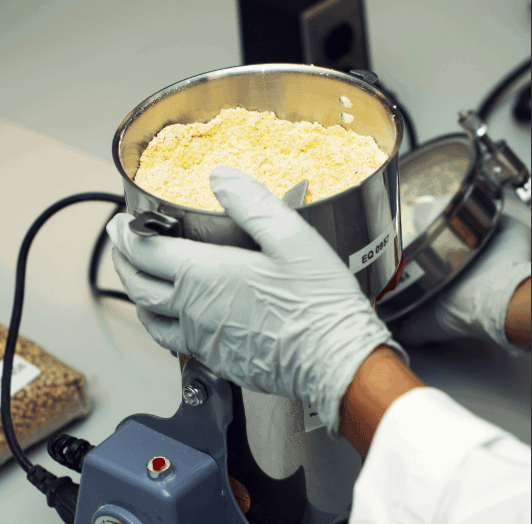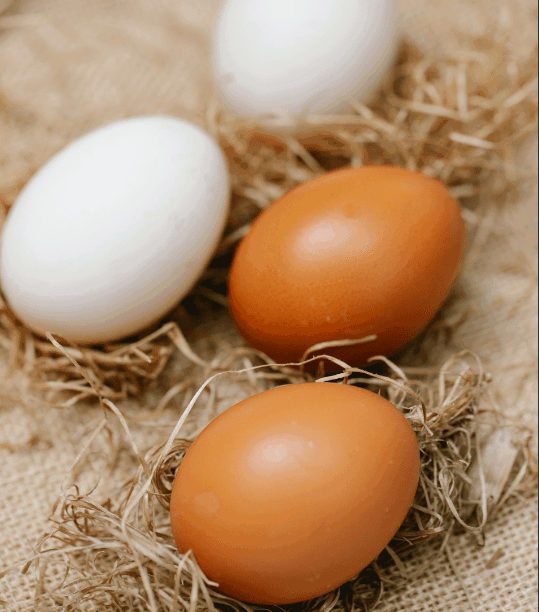



Soluble fibre improving layer performance
Soluble fibre and stimbiotic supplementation in layer poultry feed can improve performance and egg qualityThe cost of producing poultry has continued its upward trend, leading to many in the industry facing economic uncertainty – and some considering ceasing poultry production altogether. For egg producers specifically, the speed and scale of rising costs is unprecedented; the last two years alone have seen significant increases that can be partly attributed to feed and energy costs. Compared to 2016-2020 prices, the increase in feed price will add £7.50 to the cost of keeping a hen, or 30p/dozen eggs (Joice and Hill, 2022).
It comes as no surprise that alternative ingredients are being sought as a cost-effective solution. This has already been seen in broiler production, with the move away from soybean meal due to its relatively high price and environmental impact concerns; the conventional diet for layers for peak production generally consists of soya, as well as wheat and maize. However, the change in ingredients inclusion mean a change in nutrient specifications and vitamin and mineral absorptions – something that must be considered to optimise animal performance.

One aspect often under evaluation in layer feed is fibre – specifically, soluble fibre. Yet, there is a clear interest for the industry to consider this type of fibre, as it can help in both performance and gut health of laying hens, particularly when supplemented with stimbiotics. Here, we look at the positive effects a diet incorporating soluble fibre can provide for layer production, as well as the impact it has on future feed formulations for producers.
Rethinking fibre in layer diets
Historically, fibre compound has been assumed to have minimal or diluting effects on dietary nutrients, and even potentially an antinutritional effect. This belief may explain why, in laying hens, producers rarely go above 3-4% in crude fibre within feed formulation. There has been a high interest in insoluble (cellulosic) fibre – oat hulls, sunflower hulls, wheat bran – due to its impact on the development of the digestive tract; it helps to regulate digesta passage rate, nutrient digestion in the intestine and prevent cannibalism outbreaks in laying hens.
However, in recent years the increasing number of poultry studies – including those observing layers – has provided a solid base to revise this negative attitude towards incorporating more fibre in the diet and position it as a possible beneficial factor.
In particular, soluble fibre has seen less interest, although Morgan et al., 2022 found that supplementing layer diets with fermentable fibre improves nutrient utilisation, performance and gastrointestinal health in hens.
With a greater understanding of fibre structure and its role in layer nutrition, what is lacking is an understanding of the full feed fibre profile. When looking at total dietary fibre, the effect of soluble and insoluble composition and function needs to be considered on the overall nutritional strategy, as does the impact these fibre types have on performance. Additionally, stimbiotic supplementation should be examined, as these feed additives – developed to stimulate fibre fermentation – can play a important role in said strategy, aiming to get the most from dietary fibre.
The effect of different feed fibre profiles on laying hens’ performance
During a 20-week trial involving 1,200 Bovans White laying hens, researchers analysed the influence of different feed fibre profiles and stimbiotic supplementation (Signis, AB Vista) on laying hen’s performance and egg and shell quality.

The experimental diets consisted of six basal diets, each differing in fibre profile, specifically insoluble and soluble fractions. The control diet consisted of a corn, wheat and soybean meal based diet. Two additional diets were formulated: high soluble non-starch polysaccharides (NSPs) and low soluble NSPs. The former diet mainly consisted of wheat, wheat bran, soybean meal, and the latter mainly of corn, corn gluten feed and soybean meal.
The high and low soluble diets were then mixed at different ratios (50:50, 75:25, 25:75) to end up with six diets. These diets were then supplemented – or not – with a stimbiotic, making a total of 12 treatments. Each had 10 replicates per treatment, and 10 birds per replicate. Performance parameters (feed conversion ratio per dozen, production percentage) and egg and shell quality (egg weight, Haugh unit, eggshell thickness) were evaluated to gain insights into dietary and fibre fraction impacts.
The trial results demonstrated that a higher fraction of soluble fibre in feed contributed to a significant positive influence on layer performance. Specifically, higher soluble NSP feed contributed the best feed conversion ratio per dozen eggs as well as helping achieve the best production percentage.
Crucially, the stimbiotic supplementation improved egg quality in all basal diets. Although Haugh unit (measurement of the internal quality of an egg, based on the height of thick albumin surrounding yolk and the weight of eggshell) value was reduced with the increase of soluble NSPs, there was an increase and improvement in all cases when supplemented with a stimbiotic. Interestingly, when it came to shell thickness, stimbiotics had a bigger effect on the control group than all other diets.
Despite variations in high and low soluble NSPs in the feed, it is clear that to get the best performance and egg quality from layers, a minimum fraction of soluble fibre is required – with a special attention to the ratio between insoluble to soluble fraction. Additionally, stimbiotics need to be included due to its ability to modulate the microbiome, providing monogastrics better ability to ferment fibre in the hindgut, to produce short-chain fatty acids.
Considerations of fibre ratios and feed formulations
Results from this study suggest that layers may have a minimum soluble fibre requirement to help modulate the hindgut microbiome and provide fuel for bacteria that will assist with fibre fermentation and extract energy that would otherwise not be used. However, it is necessary with fibre to look at the functionality of the different kinds, as well as the different components – their ratio has a significant impact.

Producers can benefit from the use of services like near-infrared (NIR) technology, to analyse the fibre profile of feedstuffs quickly and easily and determine a correct ratio of soluble and insoluble fractions. A deeper understanding of fibre allows producers more flexibility in nutrition – the opportunity to incorporate ingredients and co-products with more fibre, at different inclusion rate percentages.
This provides economically useful opportunities; notably, producers can incorporate cheaper ingredients such as sunflower meal, rapeseed meal, wheat bran and co-products, without impacting layer performance and egg production and quality.
Conclusion
Against a weak economic backdrop, eggs are estimated to be one of the fastest growing proteins in the market, with consumer demand remaining strong. However, escalating feed costs and the volatility of available raw feed materials have led many poultry producers to seek alternative ingredients and nutritional strategies.
A strategy that needs to be considered is the incorporation of fibre. Although the role of fibre has been negatively construed in the past, the industry’s understanding of it continues to change and evolve – with recent research and the trial here highlighting the benefit of soluble fibre within feed formulations. Soluble fraction is necessary to get the best of layer performance, particularly when the diet is supplemented with stimbiotics.
By utilising NIR technology to incorporate the right ratio of fibres and various ingredients, producers can increase production whilst reducing the cost of feed formulation – supporting their economic stability.








